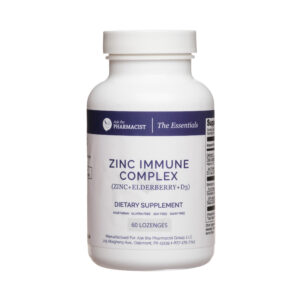
Tis the season for tricks and treats and colds and respiratory illnesses. For some, this time of year can be downright scary and traumatizing, not because of ghosts and Halloween but because of the very real threat and dangers of RSV. Unfortunately, it looks like RSV in infants and kids is threatening to overwhelm hospitals.
Respiratory Syncytial Virus, or RSV, is an very common respiratory virus that usually causes mild, cold-like symptoms. That said, it can be much more severe for the very young and those with respiratory issues. Infants are particularly vulnerable due to their still-developing immune system and small airways.
You may be seeing the name a lot more if you’re watching the news. That’s because this season has already seen a significant rise in cases. For the week of Oct. 15, the CDC reported more than 15% of RSV tests are positive, which experts say is high for this time of year.
What are RSV symptoms?
Symptoms of RSV tend to appear within four to six days after infection and may include the following:
- Runny nose
- Coughing
- Sneezing
- Fever
- Wheezing
In other words, it looks a lot like any other cold or virus you or your little one might catch. To most people, that’s really all it is. The virus is so common that nearly everyone in America has been infected with it at least once by age 2. Experts say symptoms typically resolve on their own within a week or two.
For infants under six months, symptoms may be a bit harder to spot. Things like increased irritability or lethargy, decreased appetite, or working harder to breathe are all common.
Although most cases of RSV resolve at home with supportive care, health experts say parents should be on the lookout for signs their child may need to go to the hospital:
- Difficulty breathing. In babies, this may look like using extra muscles in areas around the ribs, belly, or collarbone to breathe. If their rate of breathing looks faster than normal, or if you can hear wheezing or a sucking sound — those would all be signs or symptoms that should warrant an evaluation.
- Dehydration. Signs of dehydration for an infant or toddler may include a dry mouth or lips, going six to eight hours without needing their diaper changed, or the inability to produce tears when crying.
So how do you keep yourself and your family safe from RSV? Prevention by doing the basics and boosting your immune system. Hand-washing, discreet sneezing, and avoiding those who are already sick.
“You want to teach your child to cough or sneeze into your elbow,” or what’s called their “cough pocket,” said Dr. Katie Lockwood, a primary care physician at Children’s Hospital of Philadelphia. “Practice hand hygiene with them, and I encourage parents to supervise it until you’re confident they’re washing well.”
If you or your little one gets sick, at-home supportive care is the order of the day: hydration and (sometimes) fever medication. Unfortunately, there are also no antivirals for RSV, just like there isn’t a vaccine.
Again, for most people and most cases, RSV is just a few days of cold symptoms… but that doesn’t mean you shouldn’t be aware of what to watch out for.
Kids catch bugs. It’s part of growing up and developing a robust immune system. That doesn’t mean we should be laissez faire about it. Healthy habits build robust immune systems that are perfectly capable of dealing with the normal cold & flu season, even if they look to be worse than normal.
Eat your colors. Get regular exercise. Take your supplements. Avoid inflammatory foods. Get enough sleep.
Sources:
https://www.cdc.gov/surveillance/nrevss/images/trend_images/RSV124PP_Nat.htm


